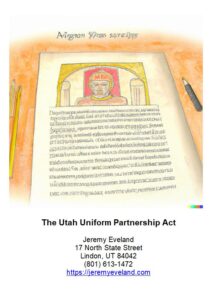You’ve worked hard to build your wealth and accumulate assets abroad, ensuring financial security not just for yourself but for your heirs as well. However, when it comes to distributing these foreign assets to your loved ones, it can be a complex and daunting process. That’s where a knowledgeable business lawyer specializing in estate planning and international law can be invaluable. With their expertise, they can guide you through the intricate legalities and ensure a smooth and efficient transfer of your foreign assets to your heirs. Don’t let the complexities overwhelm you – reach out to a trusted lawyer today to secure your family’s future.

Understanding Foreign Assets
Foreign assets refer to any property or investments that are owned by individuals or entities in a foreign country. These assets can include real estate, bank accounts, stocks, bonds, and other financial instruments. Understanding how to distribute foreign assets to heirs is crucial in ensuring a smooth transition of wealth after the owner’s passing.
Definition of Foreign Assets
Foreign assets encompass any assets that are located outside of the individual or entity’s home country. These assets can be held in various forms such as bank accounts, real estate properties, business investments, or valuable possessions. As the owner of foreign assets, it is important to be aware of the legal and taxation implications that come with these holdings.
Types of Foreign Assets
Foreign assets can be classified into different categories depending on their nature and purpose. Some common types of foreign assets include:
-
Real Estate: This includes properties such as houses, apartments, commercial buildings, or land owned in a foreign country.
-
Bank Accounts: Funds held in foreign bank accounts, including savings accounts, checking accounts, or fixed deposit accounts.
-
Investments: Stocks, bonds, mutual funds, or other financial instruments held in foreign markets.
-
Business Assets: Ownership stakes or investments in foreign companies or partnerships.
-
Intellectual Property: Patents, trademarks, copyrights, or other intangible assets held in foreign jurisdictions.
Understanding the types of foreign assets you own is essential in developing a comprehensive plan for their distribution to your heirs.
Importance of Distributing Foreign Assets
Distributing foreign assets to heirs is a crucial step in estate planning. Failing to do so can lead to complications, disputes, and unnecessary tax liabilities for your loved ones. By clearly documenting your intentions and ensuring a smooth transfer of these assets, you can provide financial security and peace of mind to your heirs.
Legal Considerations
When it comes to distributing foreign assets to heirs, several legal considerations come into play. It is essential to understand the jurisdiction, the applicable laws, and the tax implications involved in the process.
Jurisdiction
The jurisdiction in which the foreign assets are held will determine the legal framework for their distribution. Each country has its own set of laws regarding inheritance, taxation, and property rights. It is important to consult with a qualified attorney who specializes in international law to understand the specific jurisdictional requirements.
Applicable Laws
Different legal systems govern the distribution of assets to heirs, and these laws can vary significantly from one country to another. Understanding the legal implications and requirements of both the home country and the foreign jurisdiction is vital. A thorough review of local laws and international treaties is necessary to ensure compliance and a smooth distribution process.
Tax Implications
Distributing foreign assets to heirs can have significant tax consequences. Each country has its own tax laws and regulations that apply to inherited assets. It is crucial to consider the potential tax liabilities in both the home country and the foreign jurisdiction. Seeking advice from tax professionals who specialize in international taxation can help minimize tax burdens and ensure compliance.
Identifying Heirs
Before distributing foreign assets, it is important to determine who qualifies as an heir. The laws governing heirship may vary depending on the jurisdiction and the individual situation. Identifying the rightful heirs is crucial to ensuring a fair and equitable distribution of assets.
Determining Who Qualifies as an Heir
The eligibility of heirs is determined by the laws of the jurisdiction in which the foreign assets are located. In some cases, the legal system may follow a specific order of succession, prioritizing immediate family members such as spouses and children. However, it is essential to consult with a legal professional to understand the specific rules and regulations that apply to your situation.
Verifying Heirship
Once the potential heirs have been identified, it is important to verify their legal status as beneficiaries. This may require obtaining legal documents such as birth certificates, marriage certificates, or adoption records. A thorough verification process ensures that the intended beneficiaries receive their rightful share of the foreign assets.
Locating Heirs
In cases where the heirs’ whereabouts are unknown, it may be necessary to conduct a search to locate them. This can involve hiring private investigators or working with professionals who specialize in heir location services. Locating all eligible heirs ensures that the distribution process is comprehensive and inclusive.

Obtaining Necessary Documents
Obtaining the necessary documents is a critical step in distributing foreign assets to heirs. These documents serve as evidence of ownership, heirship, and legal entitlement. It is essential to gather and organize the required paperwork to facilitate the smooth transfer of assets.
Foreign Asset Documentation
Collecting documentation related to the foreign assets is crucial. This may include property deeds, bank statements, investment account statements, share certificates, or any other relevant documents that prove ownership and value. It is advisable to keep these documents in a safe place and notify your heirs of their location.
Proof of Heirship
To establish the rightful heirs, it is necessary to provide proof of heirship. This can be achieved through legal documentation such as wills, trust documents, or court orders. It is important to consult with an attorney experienced in international estate planning to ensure that the appropriate documents are in place.
Death Certificates and Wills
Death certificates serve as official proof of an individual’s passing and are required for various legal proceedings, including the distribution of assets. Wills, if prepared, outline the deceased’s wishes regarding the distribution of their assets. These documents are essential in establishing the legal validity and intent of the deceased.
Appointment of an Executor
Appointing an executor is a crucial aspect of distributing foreign assets to heirs. The executor is responsible for overseeing the distribution process according to the deceased’s wishes and applicable laws.
Selecting an Executor
Choosing the right executor is important to ensure a smooth and efficient distribution of assets. The executor should be someone who is trustworthy, competent, and capable of handling the complexities of international estate administration. It is advisable to consult with an attorney to select a qualified executor who can fulfill the responsibilities effectively.
Legal Responsibilities
The executor has legal responsibilities that include identifying and valuing the assets, paying off any debts or taxes, and distributing the remaining assets to the designated heirs. They must adhere to the laws and regulations of both the home country and the foreign jurisdiction where the assets are located. It is crucial for the executor to seek legal advice to ensure proper compliance with all legal requirements.
Resolving Disputes
Disputes may arise during the distribution process, especially in cases where there are multiple heirs or complex legal issues involved. The executor plays a vital role in resolving these disputes and ensuring a fair and equitable distribution of assets. Seeking the guidance of a skilled attorney can help navigate any potential conflicts and find amicable resolutions.

Evaluating Applicable Laws
Understanding the applicable laws is essential in effectively distributing foreign assets to heirs. Estate and inheritance laws, tax laws, and foreign account reporting requirements all come into play during the distribution process.
Estate and Inheritance Laws
Each country has its own set of estate and inheritance laws that govern the distribution of assets upon an individual’s death. These laws determine the order of succession, the rights of heirs, and the applicable tax rates. It is crucial to consult with international estate planning experts who are well-versed in these laws to ensure a smooth and compliant distribution process.
Tax Laws
Tax laws differ from country to country and can impact the distribution of foreign assets to heirs. Understanding the tax implications, including estate taxes, inheritance taxes, and capital gains taxes, is crucial in planning for the distribution process. Consulting with tax professionals who specialize in international taxation can provide valuable guidance in minimizing tax liabilities.
Foreign Account Reporting Requirements
Foreign account reporting requirements, such as the Foreign Account Tax Compliance Act (FATCA) and the Common Reporting Standard (CRS), impose obligations on individuals and financial institutions to disclose offshore assets. Complying with these reporting requirements is essential to avoid penalties and legal complications. Seeking the assistance of an attorney experienced in international tax compliance can help navigate these regulations.
Valuing and Distributing Assets
Valuing and distributing foreign assets is a key step in the distribution process. Assessing the worth of the assets and determining equitable distribution are crucial aspects to consider.
Appraisal of Assets
Valuing foreign assets accurately is essential to ensure a fair distribution. This may involve hiring professional appraisers or valuers who specialize in the specific type of assets. Obtaining professional appraisals provides an objective assessment of the assets’ worth, minimizing disputes among heirs.
Determining Equitable Distribution
Equitable distribution of assets involves allocating the assets among heirs in a fair and just manner. This can be determined based on the wishes outlined in the deceased’s will, local laws, or through negotiation among the heirs. Distributing assets in a transparent and equitable manner helps maintain family harmony and reduces the likelihood of future disputes.
Consideration of Foreign Laws and Regulations
Foreign laws and regulations may impose restrictions or specific requirements on the distribution of assets. Understanding and complying with these laws is crucial to ensure a legally valid distribution process. Seeking guidance from attorneys who specialize in international estate planning can help navigate these complexities.
Managing Tax Obligations
Managing tax obligations is an integral part of distributing foreign assets to heirs. Filing tax returns, considering double taxation, and utilizing foreign tax credits are important components to take into account.
Filing Tax Returns
When distributing assets, it is important to ensure that all necessary tax returns are properly filed. This includes income tax returns, estate tax returns, and any other applicable tax forms required by the home country and the foreign jurisdiction. Engaging tax professionals who specialize in international taxation ensures compliance with all tax filing obligations.
Double Taxation Considerations
Double taxation can occur when two jurisdictions impose taxes on the same income or assets. To avoid this, it is essential to understand if any tax treaties exist between the home country and the foreign jurisdiction. These treaties often provide relief from double taxation through mechanisms such as tax credits or exemptions. Consulting with tax professionals knowledgeable in international taxation helps minimize the impact of double taxation.
Foreign Tax Credit
If taxes are paid in the foreign jurisdiction, individuals may be eligible for a foreign tax credit in their home country. This credit reduces the tax liability in the home country by the amount of taxes paid abroad. Understanding the availability and applicability of foreign tax credits is crucial in managing tax obligations. Seeking guidance from tax professionals who specialize in international taxation helps maximize the benefits of these credits.
Avoiding Pitfalls
When distributing foreign assets to heirs, it is important to be aware of potential pitfalls that can arise. By taking proactive measures, one can avoid unnecessary tax liability, comply with reporting obligations, and prevent overlooking beneficiary designations.
Incurring Unnecessary Tax Liability
Lack of proper planning and compliance with tax laws can lead to unnecessary tax liabilities. Engaging the services of qualified attorneys and tax professionals ensures that the distribution process is structured to minimize tax exposure. By conducting thorough tax planning, individuals can take advantage of available tax exemptions, deductions, and credits, ultimately reducing their tax burden.
Complying with Reporting Obligations
Various reporting obligations exist for individuals with foreign assets. Failing to comply with these obligations can result in penalties and legal complications. It is essential to understand and fulfill reporting requirements such as FBAR (Foreign Bank Account Report) and FATCA (Foreign Account Tax Compliance Act). Seeking guidance from professionals who specialize in international tax compliance helps ensure full compliance with reporting obligations.
Overlooking Beneficiary Designations
Failing to update beneficiary designations on foreign accounts and assets can lead to unintended consequences. It is important to review and update beneficiary designations regularly to align with current intentions. Consulting with an attorney experienced in international estate planning helps prevent oversights and ensures that the intended beneficiaries receive their rightful share.
Seeking Legal Assistance
Navigating the complexities of distributing foreign assets to heirs can be challenging and overwhelming. Seeking legal assistance from a business lawyer with expertise in international estate planning is highly recommended.
Benefits of Hiring a Business Lawyer
Hiring a business lawyer with specialization in international estate planning offers several benefits. They bring a deep understanding of the legal and taxation implications involved in distributing foreign assets. They guide individuals through the entire process, addressing any legal complications and ensuring compliance with all relevant laws and regulations.
Specialized Experience
Business lawyers specializing in international estate planning have extensive experience in handling complex cross-border matters. Their specialized knowledge allows them to navigate legal complexities, minimize tax liabilities, and maximize the efficiency of the distribution process. Their experience serves as a valuable asset in ensuring a smooth and successful distribution of foreign assets to heirs.
Guidance Throughout the Process
A business lawyer provides guidance and support throughout the entire distribution process. From understanding legal requirements and tax implications to resolving disputes and ensuring compliance, they offer comprehensive assistance at every stage. Having a trusted advisor by your side ensures that your interests are protected and that the distribution of foreign assets is executed flawlessly.
Frequently Asked Questions
- Do I need a lawyer to distribute my foreign assets to heirs?
While it is not legally required to hire a lawyer, seeking the services of a business lawyer experienced in international estate planning is highly recommended. They can provide valuable guidance, address legal complexities, and ensure compliance with all relevant laws and regulations. Their expertise minimizes the risk of errors, disputes, and unnecessary tax liabilities.
- How can I minimize tax liabilities when distributing foreign assets to heirs?
To minimize tax liabilities, it is crucial to engage tax professionals who specialize in international taxation. They can help with tax planning, taking advantage of available exemptions, deductions, and credits. By structuring the distribution process strategically, individuals can reduce their tax burden and ensure a more efficient transfer of assets.
- How do I locate heirs for the distribution of foreign assets?
Locating heirs can be a complex task, especially in cases where their whereabouts are unknown. Hiring professionals who specialize in heir location services can help track down missing heirs. By conducting thorough searches and utilizing various resources, these experts can ensure that all eligible heirs are identified and included in the distribution process.
- What are the potential pitfalls to avoid when distributing foreign assets to heirs?
Some potential pitfalls to avoid include incurring unnecessary tax liability, non-compliance with reporting obligations, and overlooking beneficiary designations. To mitigate these risks, individuals should engage qualified professionals, such as business lawyers and tax specialists, to guide them through the process and ensure proper planning, compliance, and documentation.
- What is the importance of updating beneficiary designations on foreign accounts and assets?
Updating beneficiary designations is crucial to ensure that the intended beneficiaries receive their rightful share of the assets. Failing to update these designations can result in unintended consequences and disputes among potential heirs. Regularly reviewing and updating beneficiary designations minimizes the risk of oversights and ensures a smoother distribution process.












